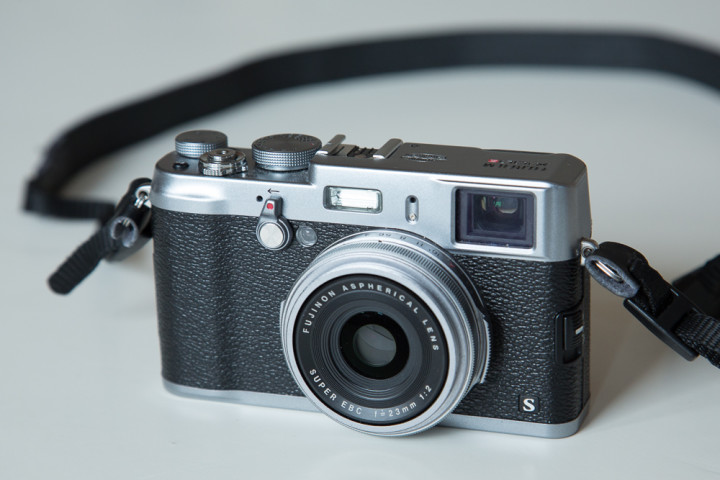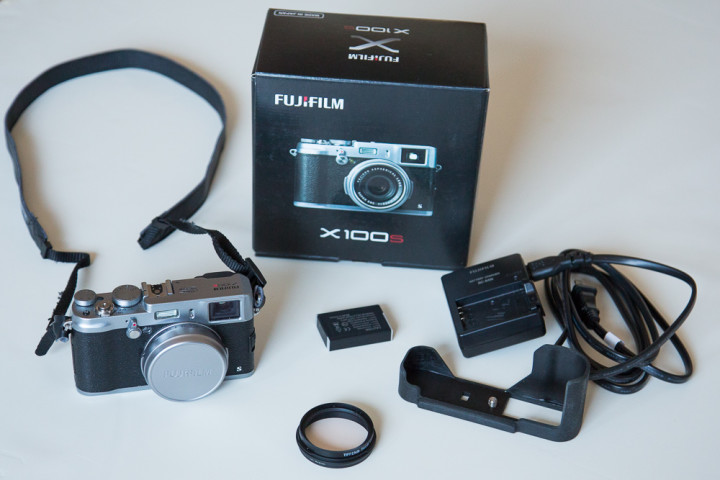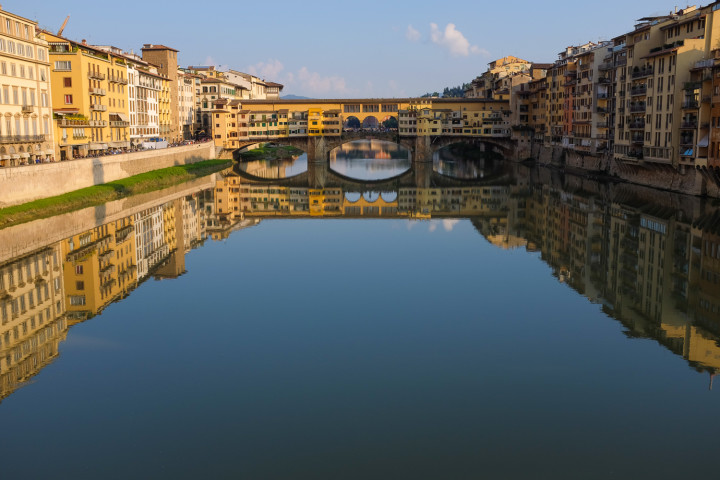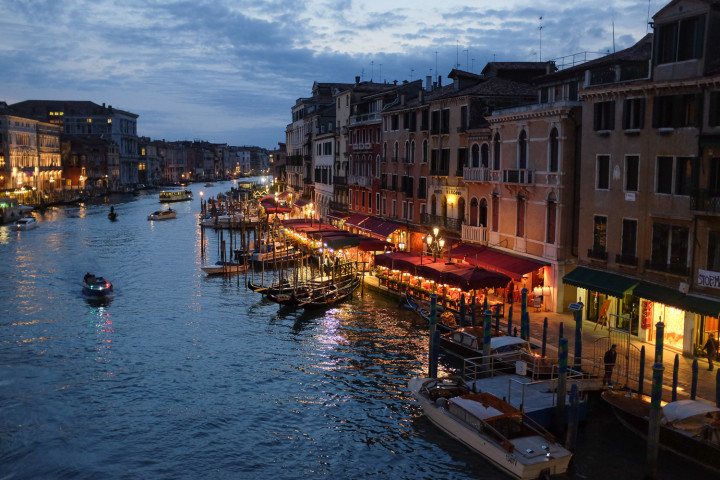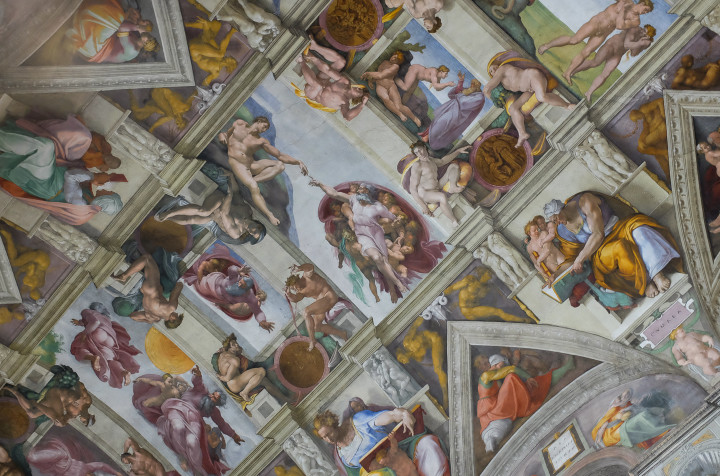For Sale: Like New Fuji x100s – SOLD!
*** SOLD!!! ***
In the end, this wonderful piece of photographic equipment just isn’t right for me so I’d like to find it a good home.
I’m selling my ‘Like New’ Fuji X100s.
– That includes the camera in the original box with all of the included accessories
– One additional battery
– 49mm Tiffen multi-coated sky filter (which can act as a permanent lens cap without worrying that the lens will get scratched)
– JB Camera Designs Grip-Base which protects the bottom of the camera and gives it a bit more size to boot.
A total of about $1400 worth of stuff list price, which I bought about a month ago so it’s still very much under warranty.
I’m selling for $1050. Plus you will save yourself the sales tax. US only please.
If you’re interested, email me bill@billwadman.com
Fuji x100s Travel Camera Review
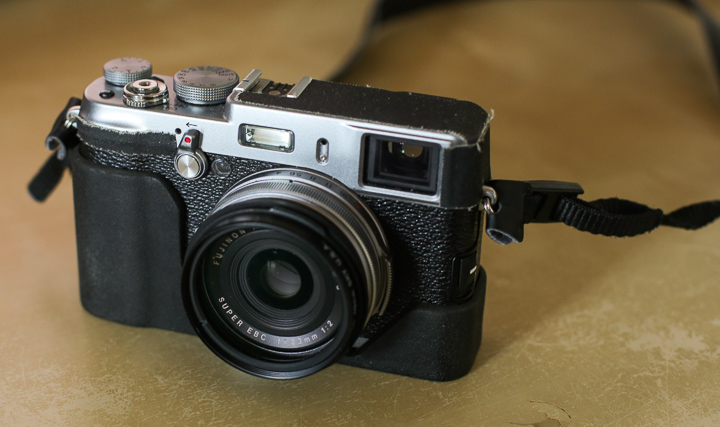 Before my recent week-long trip to Italy, I was agonizing over what camera to take with me. I wanted something smaller and lighter than my workhorse 5D Mark III. Something inconspicuous which still took great pictures. I ended up buying a Fuji x100s based upon the raving reviews of almost everyone I could find who had actually used one. “Perfect”, I thought, I can get all the fun of my M4 but with a nice little digital sensor and for 1/8th the cost!
Before my recent week-long trip to Italy, I was agonizing over what camera to take with me. I wanted something smaller and lighter than my workhorse 5D Mark III. Something inconspicuous which still took great pictures. I ended up buying a Fuji x100s based upon the raving reviews of almost everyone I could find who had actually used one. “Perfect”, I thought, I can get all the fun of my M4 but with a nice little digital sensor and for 1/8th the cost!
The camera did an admirable job and proved itself a solid piece of kit, but not without it’s foibles. Read on…
Image Quality
Assuming your focus, exposure, and technique are solid, the image quality of the Fuji x100s is really incredible. Especially within it’s limits of an 16MP APS sensor, the per pixel sharpness was just amazing. Much of this has to do with random RGB layout of the X-Trans sensor which lets the engineers do without the standard anti-aliasing filter while still avoiding any moiré that would normally crop up.
I had my camera set to auto-ISO with a max of 3200 for the whole trip and image noise was never a problem. It’s not to say that 3200 was identical to 100, but the camera’s noise reduction functions did a great job of not being too heavy-handed in its work. Files taken at night have a bit of grain, but honestly, they should considering the amount of light they were taken in.
The files were so good that I shot jpg files the entire trip, and I’m a die hard raw shooter from WAY back. I didn’t want my trip to feel like work and I wanted my use of this camera to more closely mimic a film rangefinder. I didn’t want to come home and play with every image in ad infinitum. I wanted to be satisfied with the images out of camera. This was possible because the jpg engine in the Fuji is top notch, and is much better than in any Canon I’ve ever used.
Its auto white balance was typically great as well. The handful of situations where it struggled involved terrible mixes of argon street light and fluorescent signage; a scenario where there is no right answer anyway. However, once again the auto setting did much better than my Canon has ever performed in these situations.
Focal Length
The x100s has a fixed 35mm equivalent f/2 lens on it and the glass is great. I rarely shot wide open, but there is little for me to fault. Much like the little 40mm STM lens for my Canon, it’s a great little lens in a small package. Anyone complaining about the optics either got a broken camera or doesn’t know what they’re talking about.
As for being stuck at a single focal length, my readers will know that I like primes. I also like being limited when I shoot so that I have to work a little harder to get the shot. For a trip like the one I was just on, a slightly wide lens like a 35mm is perfect. Wide enough to get a sense of the environment in the shot while not being so wide that you have to get 2ft away from your subject.
Were there times when I would have liked something different? A few, but those situations typically required something even wider. A nice 28mm would have come in handy every once in a while. Fuji makes a 28mm adapter for the camera, but it’s far too expensive in my opinion, so I never really considered it. If they had offered the camera with the option of a built-in 28mm, then I would have had a hard time deciding. I like wide.
For the handful of times that a longer lens would have been useful, you can always crop. Personally, I’m fine with letting some pictures go. I’m in Italy to see the art with my eyes, not spend the whole time with my face in the camera.
Viewfinder
The viewfinder is really a tale of two technologies. The x100s has a hybrid viewfinder which lets you switch between optical and electronic, so we’ll take each one in turn.
The optical viewfinder drew me to this camera in the first place. I wanted a digital Leica M without having to spend 8k, and the Fuji has a few neat tricks up its sleeve. For example the frame lines in the viewfinder are created by the LCD screen from the EVF. This means they can move to compensate for the parallax between the OVF and lens when you’re focused on subjects close to you. This feature gives a more accurate framing in these situations, but accurate framing on the OVF became one of its downfalls.
You see, I found that the camera captured a lot of image outside the framelines in the OVF; about 5% more ended up in the picture outside of what the framelines suggested. This was very annoying when you were trying to frame the image in a way to keep distracting elements out. In these situations I ended up switching over the the EVF so that I knew exactly what was going to be in the shot.
I didn’t expect to use the EVF much, but I did in the end, often to get an idea of the exposure the camera was giving me. When you’re inside a dark church with bright sunlight streaming in a window, it’s often hard to tell what the auto-exposure sensor is going to highlight. There were a number of times that I dialed in a -1 exposure compensation only to find an image that looked like a +1. It seems my idea of what I wanted and the camera’s computer were a bit out of sync at times.
The EVF did its job, but I still don’t like it. It feels like I’m staring at a low-quality LCD screen, not a viewfinder. It’s not that there was a lot of lag, it just feels one step further removed from the subject to me. Also, the highlights and shadows in the EVF often looked blown out or crushed when in the final image they were within the histogram. The panel they use for the EVF apparently doesn’t have the dynamic range that the files do, which makes it hard to see what you’re going to get. If the whole point of an EVF is that you get a WYSIWYG preview of what the final image will like like, then it looses a lot of it’s value to me.
Battery Life
Before I left, I took the fully-charged x100s with me on a photowalk down in New Jersey, where over the course of 3 hours I took 102 photographs. I wanted to take a few more, but at 102 pictures that the battery completely died. This was worrisome. The last thing I needed while walking around the back streets of Venice was to run out of juice.
In the end this fear was unwarranted. Even though I always kept a charged spare in my pocket, I never needed it. But then I didn’t take very many photographs each day, averaging about 80, under the 100 picture cliff that I had fallen off on my test run.
Sounds
The Fuji x100s is a VERY quiet camera, almost too quiet. There’s a selectable shutter sound that will play out of a small tinny speaker on the bottom to let you know when it takes a pictures. I turned mine off because it felt like an iPhone to me. I don’t want it to “play” a shutter sound, I want a shutter sound. Not a loud one, just an audible click so that I can tell when the picture gets taken. Over the course of the trip I handed the camera to a dozen of other photographers to take pictures of us at various locations, and every single person took a picture then looked up puzzled, wondering if the camera worked.
The one time that the silence was awesome was while taking illegal pictures in places where photos were forbidden. I snapped a few in the Sistine Chapel for instance, from the hip, and no one was the wiser. I didn’t really need to take those pictures, better ones undoubtedly exist in the world, but I like to live life on the edge. Mostly I just wanted to see how they would come out.
Handling
If I have fault with the x100s it’s with the quirks of its handling. I loved the physical knobs for shutter speed, aperture, and exposure compensation; those were nice and feel great. My hang ups were with the digital interfaces. The menu system was fine once you got familiarized with it, but I found the dial around the 4-way pad to be far too easy to turn. I changed settings accidentally while trying to click through the menu items, especially in the Q for ‘quick’ menu which let you fiddle with ISO, flash, custom presets etc.
I also could not get comfortable with the shutter release. I never felt like it took the picture when I wanted to take it. Either I didn’t half-press early enough so that there was a delay before taking the picture, or I half-pressed a little too hard so that I took the picture before I was ready. I think the only way I could use this camera in a split-second kind of situation would be in manual focus and exposure mode where the camera didn’t have any decisions to make. When it had those jobs to do, I felt like I was waiting for it to finish. Even with the physical aperture ring set to f/5.6 for instance, the lens still starts wide open has to stop down before the shutter fires before each shot; there’s always a slight delay. It is definitely not the ‘Ooh, look at that! <instantaneous snap!>” camera that some other reviews have touted it being. It’s not even close to the shutter on a manual film camera. If there was a time element involved in getting a picture, the camera was slowing me down.
Accessories
On the advice of David Hobby I ordered an inexpensive hood and quality UV filter for the front of the lens so that I wouldn’t have to worry about the lens cap, which tended to fall off. The problem with using the hood is that it obscures about an ⅛ of the frame when you’re using the OVF, but that would be true with a hood on an analog rangefinder too. Also note that the cheap hoods tend to become loose if you take them on and off a few times. I lost mine on a bus in Rome when it popped off while I was trying to exit out the door. Luckily, it only cost $12. The better plan would be to superglue the mounting ring and hood together before you screw it on.
If you’re going to get this camera, make sure you order an extra aftermarket battery or two. They’re only about $10 a piece on Amazon and could save your bacon if you take a lot of images on an outing.
Lastly, I’d like to mention an accessory that I really liked. JB Camera Designs was nice enough to send me one of their Grip Cases. It is a soft plastic half case which slides over the bottom of the camera and stays in place with a screw into the tripod mount. This protects the bottom of the camera when you put it down and stops the rear lcd from getting scratched if it falls on it’s back. The case also gives your right hand a little more bulk to hold onto, and due to the textured surface, the camera is less likely to slip out of your hands. Seriously, for $35 you can’t go wrong.
I also taped up some of the exposed metal for the trip, both to protect it from scratches and to make it even more incognito. A number of people thought it was an old film camera, exactly what I wanted them to think.
Conclusion
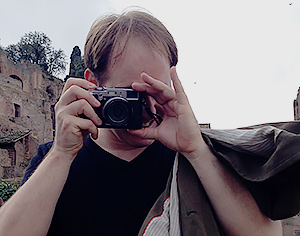 I mentioned on the podcast last week that returning to my Canon 5D Mark III for a shoot the day after I returned felt like getting into a Porsche. It’s a far more responsive camera than the Fuji, but then they’re not really playing in the same league. The x100s is a very different tool. In those situations where I had time to fiddle and play to get the picture I was looking for, the results are outstanding. However, I often felt like I was fighting the camera a little bit to get those results. I love the sensor, I love the physical knobs, I love the design, but ultimately it never ‘disappeared’ in my hands. To be fair, I only took 602 pictures the whole week so it’s not like I’ve shot tens of thousands of images with it, but then again, the camera didn’t really make me want to take 10,000 pictures. So who is at fault?
I mentioned on the podcast last week that returning to my Canon 5D Mark III for a shoot the day after I returned felt like getting into a Porsche. It’s a far more responsive camera than the Fuji, but then they’re not really playing in the same league. The x100s is a very different tool. In those situations where I had time to fiddle and play to get the picture I was looking for, the results are outstanding. However, I often felt like I was fighting the camera a little bit to get those results. I love the sensor, I love the physical knobs, I love the design, but ultimately it never ‘disappeared’ in my hands. To be fair, I only took 602 pictures the whole week so it’s not like I’ve shot tens of thousands of images with it, but then again, the camera didn’t really make me want to take 10,000 pictures. So who is at fault?
Ultimately, as far as the trip was concerned, I think I made the right choice. The Fuji x100s helped me make some lovely photographs and my back was very happy to not to be lugging around a Canon system that weighed 3 times as much. Much like the Millenium Falcon, the x100s has got it where it counts, kid. The lens is sharp and contrasty, the sensor is amazing, and the body of the camera harkens back to the late 1970’s in a good way. I just wish the modern sections of the camera were as elegant and well performing. My conclusion is that it’s a great camera, but it’s just not the best camera for me.
—–
If you’re planning on purchasing a Fuji x100s from Amazon, do it through this link and help support the site.
Some Italy Pictures from the Fuji x100s
Couple Street Shots from the Fuji x100s
Click to enlarge.
Fuji x100s First Impressions
This is certainly not going to be a full review of any kind. For now it’s merely a list of observations from my first few days of owning the Fuji x100s from the point of view of a Canon dSLR and Leica M4 user. Here we go:
– It’s small, somewhat smaller and lighter than I expected. I have a JB Camera slip-on case coming that will add to the bulk just a bit, perhaps enough for it to fit my hand a little bit better. Overall it’s almost exactly the size of the broken Canonet I bought off of ebay a few years ago.
– The battery life is pretty horrible, but take that with a grain of salt as I’m typically used to my 5D3 which gets 1500 photos on a battery. So many that I don’t carry and extra or a charger with me on vacation. I already bought an extra aftermarket battery on Amazon.
– Also added an aftermarket lens hood so that I could worry less about the lens cap and scratching the front exposed element of the lens. However at this focal length the hood covers a good 1/8th of the frame, sort of putting a poison pill in the use of the otherwise lovely OVF. And I bought this camera because of the optical viewfinder.
– The lens and image quality of even jpegs straight out of the camera is superb. As is the auto white balance, which is something my Canon cameras have never done particularly well. Here’s a 100% crop from the image above. Again, straight out of the camera. Oh and it was taken at 1600 ISO. Try to get a color image on ISO 1600 film that looks that nice.
– It is does not however have the same feel or responsiveness as a more simple and manual camera like the Leica M. Even with settings optimized to ‘high performance’, manual exposure, and the use of manual focus it feels like too much computer between me and the shutter. I feel required to ‘half-press’ to have it ready. Maybe this will improve the more I handle it, but it’s a little frustrating coming from cameras which take a picture the instant you press the shutter. It feels like the exact opposite of an extension of me, at least so far. Maybe I’m missing something, but this feels much more like an overachieving compact than a slimmed down digital rangefinder.
– It’s quiet alright. For me it’s too quiet. To the point where I have a hard idea knowing when the picture is being taken. Tactile feedback it does not do well. Oh, and a crappy 8 bit recording of a shutter sound being played through a 1cm speaker is not the panacea that they’d like to make you think it is.
– While I get the handiness of the Q menu, the thumb wheel is way too loose and responsive, to the point that I end up changing settings when I’m trying to move between menu items.
– I can’t quite get the View Mode to be what I want it to be. I want to change settings and see image playback on the rear screen and only picture taking in the viewfinder, but I can’t seem to make that happen. I end up getting the viewfinder on the rear screen and settings in the viewfinder far too often. Can’t it just act like every other digital camera I’ve ever used in this regard?
So, overall some good stuff and some bad stuff. Overall I like it, but it’s handling is very very different than the Canon’s I’m used to. Tomorrow I’m going to take a nice long walk with it and see if she and I can become better friends. I want it to disappear for the trip to Italy that I have coming up. That’ll be the ultimate test.

